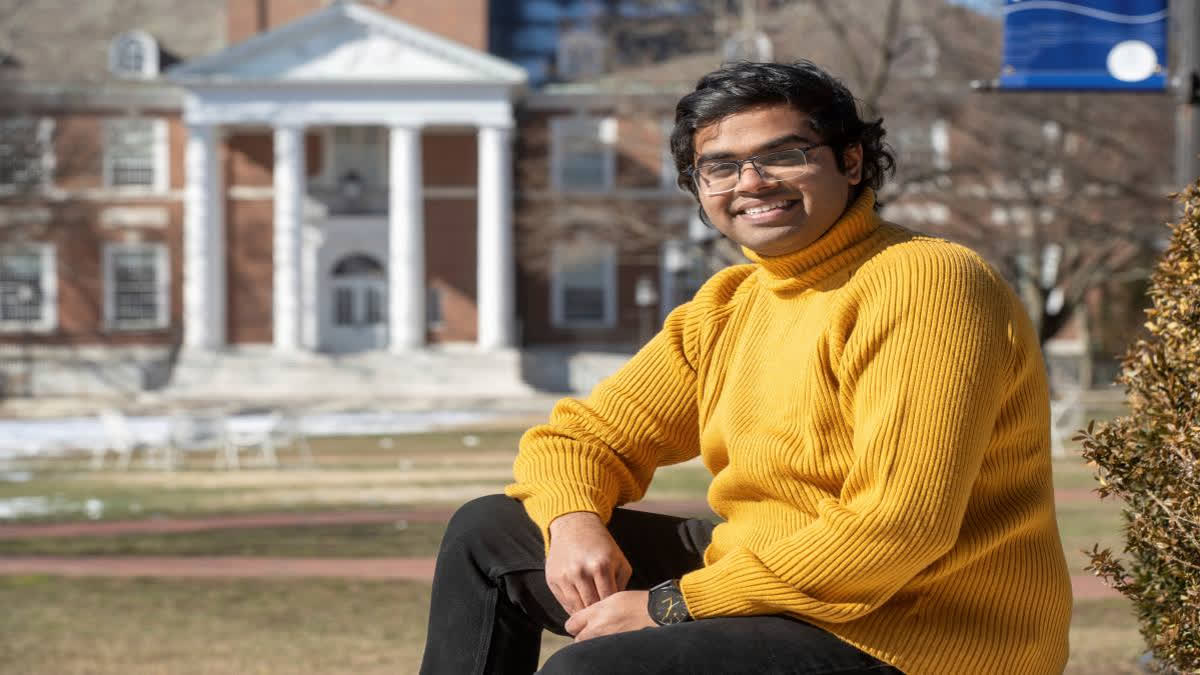Washington: Driven by the 'American Dream' and stars in their eyes record number of Indian students are setting foot in the US in search of better educational facilities. Pranay Karkale, who is spending years of savings and $60,000 in student loans to pursue a master's degree in the United States, is one of them.
Despite the huge fee, he considers himself lucky. At home in India, it's common to hear about families selling off their land to send children to universities overseas.
Karkale was willing to do whatever it took once he got into Johns Hopkins University. A degree from a prestigious U.S. college, he believed, would open doors to a better job and higher pay than he would find in India.
"I don't feel like I would have gotten the same level of education that I get here," said Karkale, 23.
Historic numbers of students from India are studying at foreign universities as a fast-growing, aspirational generation of young people looks for opportunities they can't find at home. India estimates 1.5 million students are studying at universities elsewhere — an eightfold increase since 2012 — with no country attracting more than the U.S.
It represents a loss for India, with many students seeing universities as stepping stones for careers overseas, but a boon for American schools. As record-setting enrollment by students from China has ebbed, U.S. universities have turned to India as a new source of full-price tuition payments.
India's economy is growing, but joblessness remains persistent even for college graduates. Jobs are being created in fields such as construction and agriculture, but they don't meet the demands of a newly educated workforce, said Rosa Abraham, an economist at the Azim Premji University.
"I think many young people today feel like the economy isn't meeting their potential, their aspirations, and so they want to try their chances abroad if they can," she said.
India's own higher education system is also short on capacity. As its population surges, competition for admission to India's top universities has become frenzied. Acceptance rates at some elite Indian universities have fallen as low as 0.2%, compared to 3% at Harvard University and 4% at the Massachusetts Institute of Technology.
Lokesh Sangabattula, who is pursuing a Ph.D. in materials science at MIT, is among many hoping to land jobs inside the U.S. There's little demand for materials scientists in India, he said, and at best he figures he could become a professor. It's a similar story for engineers, which India generates in huge numbers without the industry to employ them.
"We produce engineers whose degrees don't have value, so people leave the country," he said.
Universities in Canada, Australia and the United Kingdom also are seeing surging interest, but none more than the U.S., where universities enroll nearly 269,000 students from India. With that number soaring, including a 35% increase in the 2022-23 academic year, India is on the verge of replacing China as the largest international presence on U.S. college campuses.
The vast majority are coming for graduate programs, often in science, math and engineering — fields that have faced persistent labor shortages in the U.S. — though undergraduate numbers also are rising as India's middle class expands. One selling point is the chance to work in America for up to three years after graduating, a benefit provided by the U.S. government and known as optional practical training.
For Karkale, staying in India never felt like an option. As an undergraduate in India, he became interested in engineering management, which merges engineering and leadership skills. It's a growing industry in the U.S. and Europe, but Karkale, who is from the western Indian state of Maharashtra, couldn't find any master's programs in India.
